Cordón del Plata
Author: Martin Linhart
Photos: Vladimír Linhart | Martin Linhart | Aleš Oplt
Tags: 2008 | Andy | Argentina | Cordón del Plata | Jižní Amerika
A lot of articles about the importance of acclimatisation were and will surely be written. These lines are meant for those who head for South America to stay near the sunny city of Mendoza and attempt to climb some of the six-thousanders, like Mercedario (6720m), Tupungato (6570m), or even the highest mountain of the Americas: the tourist-flooded Aconcagua (6962m).
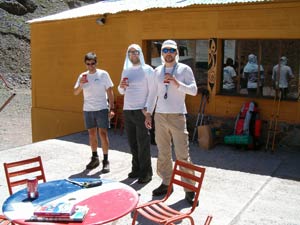 There are many reasons why to get acclimatised before these climbs – first, you can go alpine style without carry-ups of material (just keep going up). The advantage of a fast advance is a lighter backpack too, since you don’t need to carry food for weeks ahead. You quickly run away the crowds of people who usually end at the base camp or the first altitude camp. You will be much better prepared for a heavier version of the ascent trail off the beaten „tourist“ path, and last but not least, you will enjoy the climb you really are there for, without too many concerns about your health.
There are many reasons why to get acclimatised before these climbs – first, you can go alpine style without carry-ups of material (just keep going up). The advantage of a fast advance is a lighter backpack too, since you don’t need to carry food for weeks ahead. You quickly run away the crowds of people who usually end at the base camp or the first altitude camp. You will be much better prepared for a heavier version of the ascent trail off the beaten „tourist“ path, and last but not least, you will enjoy the climb you really are there for, without too many concerns about your health.
Cordón del Plata mountain area is an ideal place in terms of acclimatisation. It is perfectly accessible from Mendoza, with flawless conditions for camping, ideal altitude ranges, including lots of „walkable“ hills from 4000 to almost 6000 metres (in this area there are 10 peaks exceeding 5000m).
Accessibility
The starting point for a trip to Cordón del Plata (Cordillera Frontal) is the Argentinian „el centro del andinismo“ in Mendoza. There are two ways to reach the approximately 80km distant Vallecitos.
By a cheap coach (10 pesos) you get to Potrerillos and then walk or hitchhike. However, if you fail to get a lift, it’s going to be an almost whole day walk in heat and one thousand altitude metres by a dirty, 20km long road.
Another option is to hire an agency that takes you in less than two hours from Mendoza to the winter ski mini-resort of Vallecitos (2890m). We opted for the Ski&Montaña Agency/Vallecitos. Before leaving for the expedition, we agreed (informes@skivallecitos.com) on prices and requested times of departures/arrivals. If you need individual transport for your group only, the price will be around 600 pesos and the timing is entirely in your hands. But for us the standard way was more than convenient. Every morning at 9:30 am there’s a car leaving from the northern parking lot of the coach/bus Terminal del Sol and every afternoon at 17:30 back from the Refugio de Ski&Montaña in Vallecitos. One-way fare was 50 pesos per person.
That's basically all the expenses you will have with the acclimatisation, not counting food or equipment. There are no other charges to pay for entering Cordón del Plata. The total eight-day acclimatisation costs for the three of us were some 110 EUR, which was the amount spent on food in Mendoza and on the return ticket with the agency.
Conditions in Cordón del Plata
We recommend to set aside a week or up to ten days for the acclimatisation. In our experience this allows you to achieve several peaks, including the highest, Cerro Plata (6000m). But what counts more than the number of summits is the altitude you sleep in. And for this the options in Cordón del Plata are virtually endless.
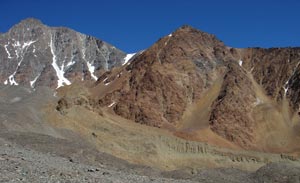 The climate in the area is influenced by the proximity of Aconcagua massif. If „viento blanco“ rages on, then here too, you will have large clouds, strong winds and relatively low temperatures.
The climate in the area is influenced by the proximity of Aconcagua massif. If „viento blanco“ rages on, then here too, you will have large clouds, strong winds and relatively low temperatures.
Bear this in mind when preparing your gear. A good tent is of the essence. The sharp gusts of wind can wreak havoc. During our stay in Cordón del Plata we met two groups of Czechs and Slovaks, who had lost their tents and were forced to descend early. It’s good to have a tent with snow flaps, carefully weighted down with stones, and cords attached to really stable and heavy boulders. Doing so, you avoid a night adventure – messing about and looking for additional load and tightening the cords that otherwise keep banging on the tent walls. By the way, don’t forget earplugs, not only against your snoring colleagues.
Temperatures in Cordón del Plata do not fall into extremes, so we don’t advise to take plastic mountaineering boots. If you are not used to them, the only thing you gain is that you damage your legs and will have to spent more days in Mendoza to recover before the real climb, thus wasting the acclimatisation effect.
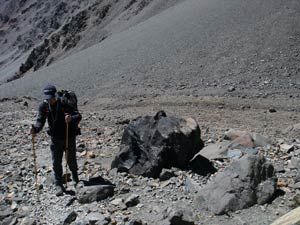 It’s also good to think about taking a bulky down jacket or rather a different combination of outerwear, including a fleece jacket. The same with gloves – none of us wore the big down mitts. Also think about the right combination of sleeping bag with mat – whether a warmer bag and a thinner groundsheet or the opposite.
It’s also good to think about taking a bulky down jacket or rather a different combination of outerwear, including a fleece jacket. The same with gloves – none of us wore the big down mitts. Also think about the right combination of sleeping bag with mat – whether a warmer bag and a thinner groundsheet or the opposite.
Regarding equipment, it should be noted that there is no need to carry everything from home. In Mendoza you can get almost everything without any problem. We were after mats, gas cartridges and petrol bottles. Prices can be somewhat higher than at home, but after return you can still try to sell the stuff back. Borrowing is another option. We made use of it in the case of big transport bags, but this was only for the Aconcagua climb. Most people just carry everything on their backs to Cordón del Plata. But it is not necessary. The agency will easily arrange the delivery by mule, rent a tent for you at the altitude camp in El Salto, cook…so the acclimatisation strategy is purely up to you.
The good thing about acclimatisation is also testing the diet based on local groceries. Local stores, headed by a large Carrefour, are supplied perfectly.
Possibility to bring food from home is limited! Very strict rules apply in Chile, where they scan almost all baggage on arrival. And there’s another check at each and every crossing into Argentina (within Chile also at most internal borders between regions). Everything goes through X-rays. From our experience this is simply not the way. In Argentina it’s much better. Baggage is checked only at random. What kind of foodstuffs should not pose a problem? Namely originally packaged dried non-perishable products, like ready made soups, oat flakes, powdered drinks, etc.
Conditions for camping
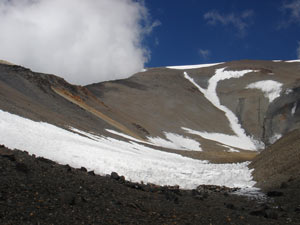 You can rest right after arrival in Vallecitos (2890m) in one of the modestly furnished cottages. Most people, though, go the same day a couple of metres up to the camp in Las Veguitas (3150m).
You can rest right after arrival in Vallecitos (2890m) in one of the modestly furnished cottages. Most people, though, go the same day a couple of metres up to the camp in Las Veguitas (3150m).
The trail is obvious and virtually whole of it follows a mountain stream. In less than an hour you find yourself in a beautiful green meadow, which is split by the branched arms of the brook. This is the perfect place, flat, with enough stones to weigh down your tent. The only real danger is the wind with its unexpected gusts.
Another camp is a place known as Piedra Grande (3550m). And indeed, there is a mighty boulder, which can not be missed. Some choose this as their first camp and many others just skip it and continue from Veguitas straight above four thousand to other camps. Our way was to stay in Veguitas the first day, acclimatisation return walk to the El Salto camp (4200) on the second. Third day we moved with all the stuff to Piedra Grande and relaxed.
Piedra Grande is not such a friendly place as Las Veguitas. It’s considerably more difficult to find the right place to pitch your tent, the best spots always taken. But there is a perfect protection from wind, including shielded places for cooking. Water is available some 300 metres away, towards the stream. The water is a bit muddy. The last warning is about foxes: they roam around the camp and in the evening and at night do attack the supplies of food not properly packed and hidden in a tent. On the other side the foxes provide a welcome entertainment.
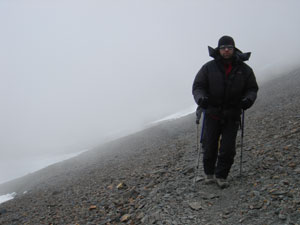 The main camp in the area is the above mentioned El Salto (4200m) - or El Salto de Agua (waterfall). It is the only camp with a permanent crew of the Ski&Montaña/Vallecitos Agency in the season, with two large tents. You can buy basic food, rent a tent or just a bed, have your cargo carried up here on mules, and there’s also a radio. From both of the previously described camps one can see the conspicuous rock on which El Salto stands. Walk from Piedra Grande at a normal pace should not take more than three or four hours.
The main camp in the area is the above mentioned El Salto (4200m) - or El Salto de Agua (waterfall). It is the only camp with a permanent crew of the Ski&Montaña/Vallecitos Agency in the season, with two large tents. You can buy basic food, rent a tent or just a bed, have your cargo carried up here on mules, and there’s also a radio. From both of the previously described camps one can see the conspicuous rock on which El Salto stands. Walk from Piedra Grande at a normal pace should not take more than three or four hours.
The camp is quite large. Tent spots are well groomed after the preceding groups and all over the place there are perfect stone wind-stopping bulwarks. Water runs through the centre of the campground. Just in the morning it’s rather lazy, sometimes you have to wait for the first sunbeams.
After climbing some 650 vertical metres to El Salto, we carried on the following day to the camp of La Hoyada (4600m) - sometimes referred to as Hollada. It’s a short leisurely walk with a steep finish. In Hoyada there are not so many choices for pitching and well anchoring your tent. On the other hand, most climbers start their ascents directly from El Salto and camping in Hoyada is not sought after that much. The first night, there was only one other tent and the other days we camped alone. Many groups were scared by strong gusty winds, which destroyed several tents in Hoyada and a group of twenty people was forced to go down altogether. Be really careful when choosing the right spot. Proximity of water is important, as well as the size and stability of the protective rock bulwark.
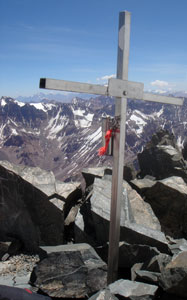 In our opinion, Hoyada is the ideal altitude camp for the period of acclimatisation: it lies 300 to 400m above the base camps at Aconcagua, and has a great location for climbs in the surrounding hills.
In our opinion, Hoyada is the ideal altitude camp for the period of acclimatisation: it lies 300 to 400m above the base camps at Aconcagua, and has a great location for climbs in the surrounding hills.
For old foxes there’s one other option. The campground in the saddle of Portezuelo (5100m) between the peaks of Vallecitos (5550m) and Cerro Plata (6000m). Tent can be pitched and there are remains of protective walls. The saddle is heavily exposed to winds and water can be had only from a few small snow fields, if no fresh snow is available.
An interesting option that we considered was leaving the tent in Hoyada and a bivouac in the Portezuelo saddle only with the very basic stuff and sleeping in the bivy sack.
♦ ♦ ♦
In Cordón del Plata, apart from the standard heat, from which there’s no escape, we encountered particularly strong winds, and in the altitudes above 4500 metres, fogs and ever-present moisture in the form of incessant fine rain. Such weather changes are not common here, but better to count with them. A retreat from the mountain in case of difficulty is easy. Even from the highest camp described or from the Cerro Plata peak it is still possible to make it down in one day, with a bit of effort and some extra blisters, perhaps. Because of knees and the fact that it´s only acclimatisation, it is wise to split the descent into two days. We didn’t want to end up like the poor guys who went down in one go, and worse, in the plastic boots. A lamentable sight.
♦ ♦ ♦
| PROCESS OF ACCLIMATIZATION - CORDÓN DEL PLATA | |
| 1. DAY | transport Mendoza - Vallecitos (2890m) |
| Vallecitos - camp Las Veguitas (3150m) | |
| 2. DAY | acclimatization walk up to camp El Salto (4200m) |
| camp Las Veguitas (3150m) | |
| 3. DAY | camp Piedra Grande (3550m) |
| 4. DAY | camp El Salto (4200m) |
| acclimatization walk up to camp La Hoyada (4600m) | |
| 5. DAY | camp La Hoyada (4600m) |
| acclimatization walk up to mountain pass (4900m) | |
| 6. DAY | peak Cerro Plata (6000m) |
| camp La Hoyada (4600m) | |
| 7. DAY | peak Vallecitos (5550m) |
| camp El Salto (4200m) | |
| 8. DAY | El Salto - Vallecitos (2890m) |
| transport Vallecitos - Mendoza | |
♦ ♦ ♦
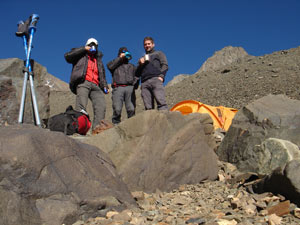 One anecdote to conclude. In many outdoor shops in Mendoza it is possible to buy a publication describing on 240 pages the whole Cordón del Plata area. Apart from Spanish, there’s an English version: Mountains of Light, Cord of the Silver, Routes-Histories-Ascents. If you understand a little Spanish, don’t buy the English version. It is written in a gruesome style. It looks like as if the author just swept it through an electronic translator and published.
One anecdote to conclude. In many outdoor shops in Mendoza it is possible to buy a publication describing on 240 pages the whole Cordón del Plata area. Apart from Spanish, there’s an English version: Mountains of Light, Cord of the Silver, Routes-Histories-Ascents. If you understand a little Spanish, don’t buy the English version. It is written in a gruesome style. It looks like as if the author just swept it through an electronic translator and published.
Just to give you a flavour. The first sentence on the back cover reads as follows: „Is directed to the lovers of the mountain; to that already they have explored in them and to those who have still not had the opportunity to explore in their interior.“
And the book's motto: „You must prepare yourself to know all the corners the Cord of the Silver and to discover your deeper secrets.“.
♦ ♦ ♦
Map - Cordón del Plata
A decent quality map of Cordón del Plata in the scale of 1:40 000 can be ordered for 45 pesos - here.
Guidebook - Cordón del Plata
Summary of peaks, including basic maps, see the comprehensive book by John Biggar: The Andes. A Guide for Climbers. If this is not enough for you, then in some of Mendoza outdoor shops you can have a book by Alejandro Geras: Mountains of Light, Cord of the Silver, Routes-Histories-Ascents. Definitely go for the Spanish version, English is unreadable – see examples above.


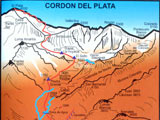
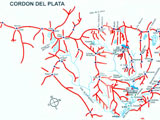
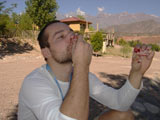
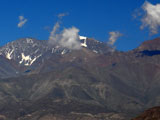
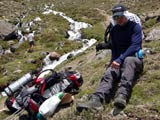
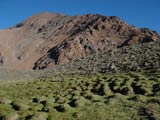
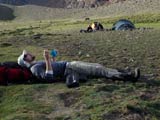
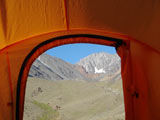
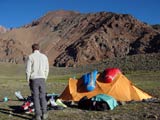
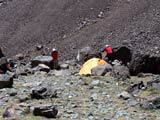
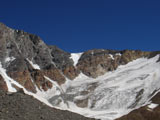
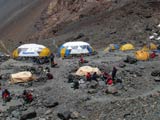
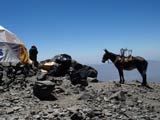
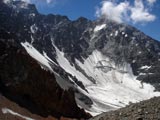
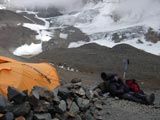
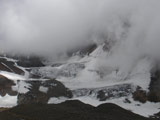
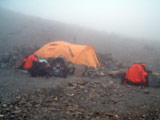
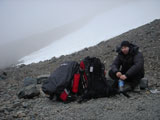
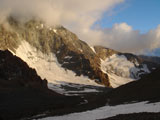
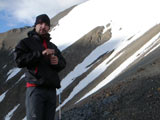
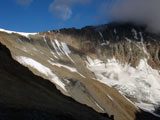
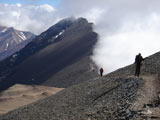
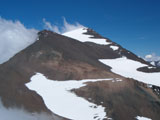
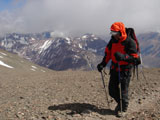
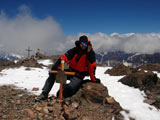
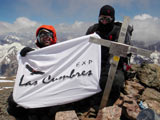
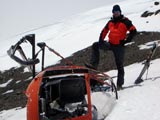
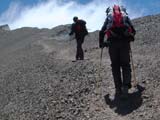
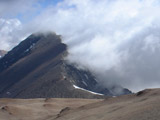
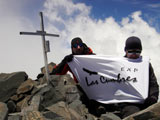
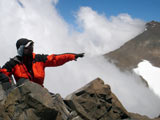
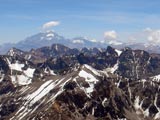
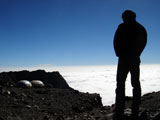
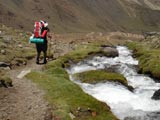
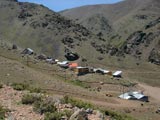
Comments